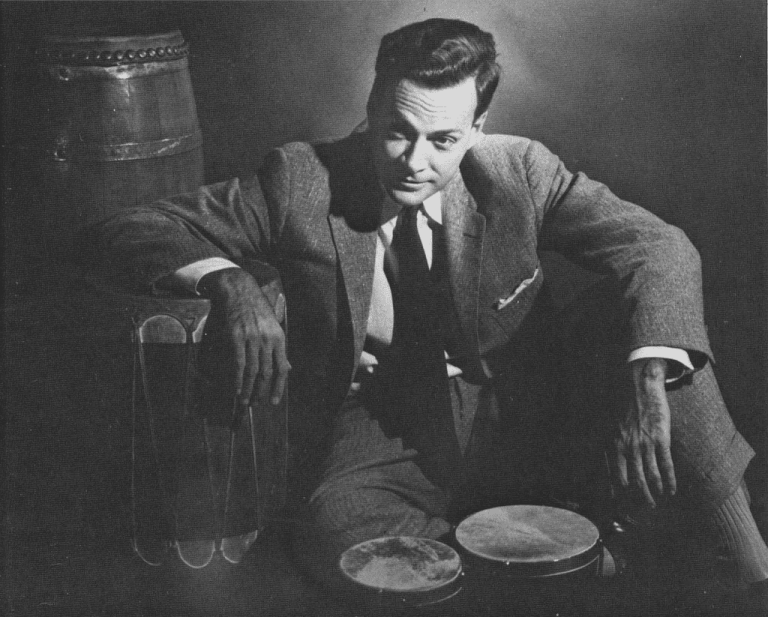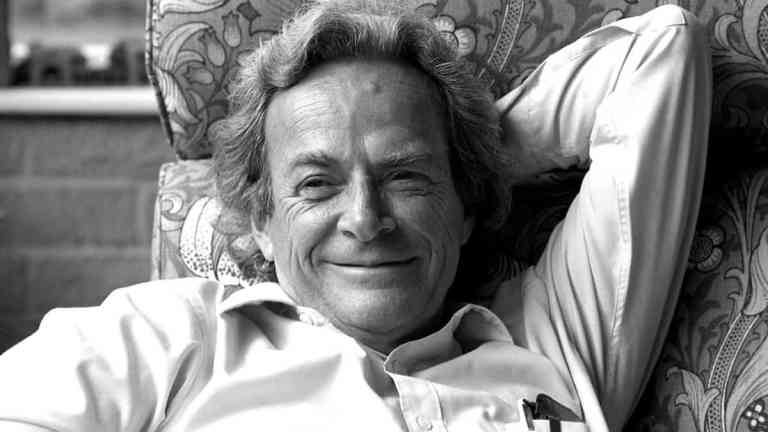The future has become so uncertain that goals are now obsolete.
The stable, predictable world we grew up in is gone. The idea that you can make a “5-year plan” and execute it one step at a time is laughable. No one knows what’s going to happen in the next 5 years or even the next 5 weeks.
Goal-setting was once central to our conception of what it means to navigate the future successfully. But goals can no longer serve as guides to an unfolding future that we have so little control over.
But this doesn’t mean that we have to throw up our hands in defeat. It doesn’t mean there’s nothing we can do to influence our fate. It just requires us to make a shift from leading with goals to leading with questions.
Replacing goals with open questions
Questions shine a light toward the future – but more like a lantern than a focused beam.
They illuminate a space of possibilities where many avenues can open up, not just a single narrow path. Goals lead with certainty toward a predetermined outcome, taking the future for granted. While questions lead with doubt into the unknown, acknowledging the inherent uncertainty of everything that is yet to come.
Questions ask you to start with what you don’t know but would like to discover. They draw in others to pitch in and make their own contributions. They serve as open invitations to collaborative projects, versus the solitary path of individualistic achievement envisioned by goals.
In a world of uncertainty, questions are more powerful than answers. Answers serve you for a season, but a question lasts forever. Let’s revisit Richard Feynman’s story to discover the principles he used to navigate the uncertainty he faced effectively and even joyfully.
3 principles for navigating uncertainty
Richard Feynman rose to prominence during a 20th century which saw enormous advances in science, but also a destabilizing plunge into uncertainty that foreshadowed our own time.
The famous Heisenberg Uncertainty Principle rocked physics when it was introduced in 1927. Formulated by German Nobel laureate Werner Heisenberg, the principle stated that it is impossible to know with accuracy both the position and the momentum of a particle, no matter how much is known about its initial conditions.
This introduced a fundamental amount of uncertainty into physics, which up until that point had been on a ceaseless march to ever-greater levels of precision. It defined for the first time a frontier of knowledge that it seemed we would never be able to cross.
Feynman was part of the first generation of physicists to grow up in this “era of uncertainty,” and one of his chief contributions was developing an approach to scientific knowledge that worked despite such ambiguity.
His philosophy relied on three pillars:
- The value of ignorance
- The value of transparency
- The value of a change in perspective
1. The value of ignorance
Feynman loved knowledge, but that doesn’t mean he hated ignorance.
As his biographer James Gleick notes, he seemed to “hoard shallow pools of ignorance, seemed to protect himself from the light like a waking man who closes his eyes to preserve a fleeting image left over from a dream.”
He famously refused to read the academic literature of his predecessors or contemporaries, preferring to work problems out for himself to see if he could find a simpler, more elegant solution (which he often did). He chided his graduate students who began their research by studying what had already been discovered. He believed that by doing so, they were giving up their chance of finding something original.
He said later: “Maybe that’s why young people make success. They don’t know enough. Because when you know enough it’s obvious that every idea that you have is no good.”
Feynman believed in doubt, not as a blemish on our ability to know, but as the essence of knowing. The only alternative to doubt was to blindly trust in an external authority, which science had fought against for centuries. He believed that it was not certainty but freedom from certainty that empowered people to act even when they didn’t have all the necessary information.
Toward the end of his life, he encapsulated his attitude in an interview:
“You see, one thing is, I can live with doubt and uncertainty and not knowing. I think it’s much more interesting to live not knowing than to have answers which might be wrong. I have approximate answers and possible beliefs and different degrees of certainty about different things, but I’m not absolutely sure of anything and there are many things I don’t know anything about, such as whether it means anything to ask why we’re here…. I don’t have to know an answer. I don’t feel frightened by not knowing things, by being lost in a mysterious universe without any purpose, which is the way it really is as far as I can tell. It doesn’t frighten me.”
2. The value of transparency
Feynman’s second principle for dealing with uncertainty was a deep commitment to radical transparency.
In a competitive academic world in which a discovery might lead to prizes, fame, and riches, the honest pursuit of truth sometimes takes a back seat. Then and now, scientists can be tempted to race to publish first, criticize each others’ results, or zealously guard resources and equipment.
It seemed to Feynman that scientific integrity required not just honesty, but an extreme form of honesty that included effort. In his book Surely You’re Joking Mr. Feynman! (affiliate link), he describes it as a “leaning over backward” to purposefully expose your hidden assumptions and potential mistakes.
For example, when conducting experiments, he advised reporting not only on everything that went as planned, but also anything that could be invalid or misunderstood. Details that could throw doubt on your interpretations must be given, so that an independent observer can decide for themselves the value of your contribution. And his highest test of all: a theory should be able to explain something that you didn’t even set out to explain, not just your original hypothesis.
Feynman’s commitment to this level of utter honesty can be summarized in perhaps his most famous quote: “The first principle is that you must not fool yourself– and you are the easiest person to fool.”
3. The value of a change in perspective
Both ignorance and transparency set the stage for the third principle in Feynman’s worldview: the importance of seeing things from a new perspective.
The most concrete example of this view was his extensive foreign travel. At a time when overseas trips were not nearly as common, he spent months at a time exploring Latin America and Asia on both work trips and personal vacations.
In Brazil, one of his favorite places, he became fond of the musical style known as samba and even joined a local samba school. There, he mastered an instrument known as the frigideira, a metal plate emitting a light, fast tinkle, well enough to perform in street parades and paid private gigs.

In Rio de Janeiro in the summer of 1949, Feynman was invited to teach physics as a visiting lecturer at the newly established Brazilian Center for Research in Physics. He often expressed his appreciation for what the art of teaching taught him:
“The questions of the students are often the source of new research. They often ask profound questions that I’ve thought about at times and then given up on, so to speak, for a while. It wouldn’t do me any harm to think about them again and see if I can go any further now.”
His students gave him a fresh perspective from the point of view of a novice, which he cherished throughout his life. He once said: “There is a pleasure in recognizing old things from a new point of view. Also, there are problems for which the new point of view offers a distinct advantage.”
The ultimate “beginner’s mind” is that of a child, and Feynman consciously cultivated an innocent, childlike way of viewing the world. He said, “Children and scientists share an outlook on life. If I do this, what will happen?… Every child is observer, analyst, and taxonomist, building a mental life through a sequence of intellectual revolutions, constructing theories and promptly shedding them when they no longer fit. The unfamiliar and the strange—these are the domain of all children and scientists.”
As our own time becomes more ambiguous and our future more uncertain, we can learn powerful lessons from Feynman about what it looks like to thrive in a world we don’t fully understand.
We can value our ignorance in questioning old assumptions, communicate with transparency to invite others to correct our mistakes, and purposefully take a chance on changing our perspective when the problems we are facing seem to have no solution.
The question of living a full life
Looking at the totality of Richard Feynman’s life, what stands out to me the most is not his scientific achievements. There have been many equally brilliant scientists through the ages.
What strikes me is that he also lived a full, rich, well-rounded life. He didn’t limit himself to excellence in just one arena or force himself to fit into a particular mold. He traveled, made music, raised a tight-knit family, formed many close friendships, and contributed to important causes, always pursuing what fired his imagination regardless of whether it was popular.

For me, this is the heart of a question-oriented approach to life: the decision to remain fundamentally open to the full range of experiences that life has to offer. To express your values and dreams without fear, trusting that the universe is inherently full of possibilities more wondrous than you can possibly imagine.
In Part 6, I’ll share examples of favorite problems you can borrow or use as templates for your own curiosity.
Follow us for the latest updates and insights around productivity and Building a Second Brain on Twitter, Facebook, Instagram, LinkedIn, and YouTube. And if you’re ready to start building your Second Brain, get the book and learn the proven method to organize your digital life and unlock your creative potential.
- POSTED IN: Personal growth, Productivity, Strategy
